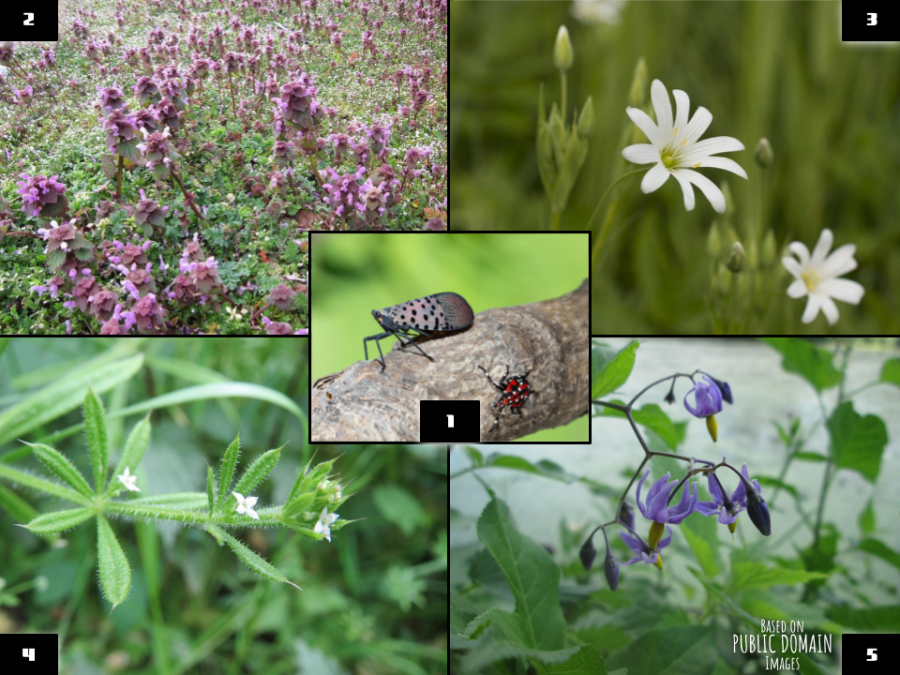SC-A9—Invasives in Kearny: Watch Out!
June 13, 2023
Hello LMS Digital News readers, and welcome back to the latest issue of Swiss Cheese. In case you were wondering, SC-A9 stands for: Swiss Cheese (my article line), Article №9, the final article of the year (and possibly of my entire time as part of the LMS Digital News crew). This article is all about the invasive species found in Kearny, NJ! (Emphasis on INVASIVE.)
Spring. A time of the year filled with new life…and new threats from invasive plants and insects. This year, certain invasives seem to be posing a greater threat than others. This article aims to predict what one should look out for this (and next) spring (based on current trends), before it’s too late.
Good luck, and be on the lookout for innovative removal strategies!
DISCLAIMER: The author is not responsible for any consequences that may arise from following the author’s suggestions. This article expresses the author’s own point of view, and such a view may not be accurate in all circumstances.
#1: Spotted Lanternfly (Lycorma delicatula)
- Nearly ten years ago, spotted lanternflies first made their way to the state of Pennsylvania. Since then, despite certain quarantine measures imposed, spotted lanternflies have spread to several U.S. states, including New Jersey. This year, I have already begun to observe young spotted lanternflies in Kearny. At their present stage, they may be seen as tiny black specks with even tinier white spots. They enjoy feeding on all manner of common Kearny flora, including, but not limited to, grapevines, Virginia creepers, and even trees of heaven. They can severely damage even large trees, so eliminating them before it is too late may be a good idea…
#2: Deadnettles (Lamium spp.)
- By now, the last of the deadnettles have withered and died. However, each flower has already developed tons of seeds. As the fragile corpses of deadnettle are slowly consumed by the earth, so are the seeds. This, along with the fact that deadnettles are unbelievably invasive, means that next spring Kearny could have a big problem with these tiny terrors.
#3: Chickweed (Stellaria spp.)
- Young chickweed are often hard to notice. As they age, however, they can grow into large colonies. One can even find these on lawns, where chickweed stems weave into the grass and form dense clumps that are deceptively hard to eradicate.
#4: Cleavers (Galium aparine)
- Cleavers…where should I begin? Cleavers, also known as catchweed bedstraw, are a great threat to any garden, big or small. Their stems and leaves are covered in thin hairs. These hairs cause cleavers to stick to other plants, choking them and forming dense mats of “sticky” growth. Cleaver seed pods are also covered in hairs, causing them to stick to clothing and spread like wildfire.
#5: Bittersweet Nightshade (Solanum dulcamara)
- The genus Solanum, besides including potatoes and tomatoes, includes a plant called bittersweet nightshade. This plant is highly toxic, unlike its delicious relatives. Beyond putting pets and people at risk, this plant can also grow somewhat like a vine, leaning on man-made structures for support. Bittersweet nightshade has a characteristic dark stem and oddly lobed leaves, but beside that, it can be difficult to identify when young and can grow out of control.
[NOT PICTURED]:
Common Mugwort (Artemisia vulgaris)
- Large, thicks stems and huge leaves make this one annoying to yank out. Unfortunately, mugwort multiplies rapidly and can infest entire gardens.
Japanese Knotweed (Reynoutria japonica)
- This weed boasts bamboo-like stems and can be found in a variety of habitats. After being chopped down, it can grow back rapidly and become a troublesome invasive.
Virginia Creeper (Parthenocissus quinquefolia)
- Virginia creeper’s delicate foliage may seem easy to remove…until you realize that it has developed a huge underground rhizome system. The part above ground is merely the metaphorical tip of the iceberg. The part above the earth can crawl onto buildings and damage them. Known for its leaves of five.
Find all the Swiss Cheese at (https://lmsdigitalnews.com/?s=sc-). If you liked this article, you may also enjoy my other articles, accessible via the LMS Digital News website. Interested in discovering more? Visit SC-A7’s trivia for even more fascinating facts and research opportunities!

